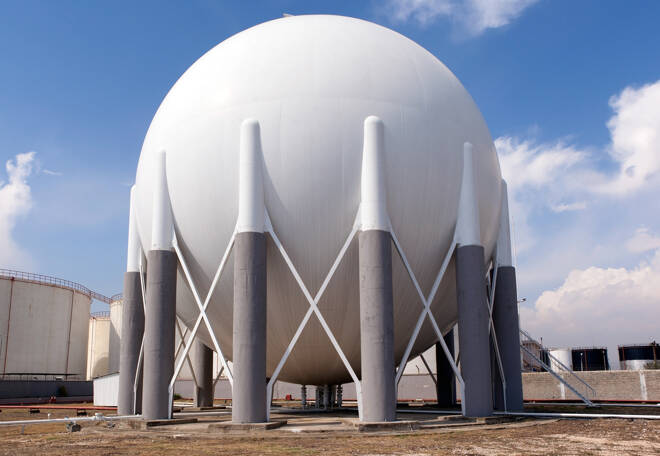Advertisement
Advertisement
Natural Gas Price Fundamental Daily Forecast – Focus Remains on Acheiving Adequate Supply for Winter Heating
By:
The EIA injection appeared to confirm storage levels are still on course to fall short of the 3.7 trillion cubic feet of gas needed ahead of winter.
Natural gas futures are edging lower on Friday after surging to their highest level since July 27 the previous session on chatter about increased gas flows to Freeport LNG, which shutdown in June, a drop in daily gas output and new forecasts calling for more demand over the next two week than previously expected.
Meanwhile traders shrugged off Thursday’s government storage report that showed a bigger-than-expected build with the focus still on acheiving adequate supply for the winter heating season.
At 09:05 GMT, September natural gas futures are trading $8.700, down $0.174 or -1.96%. On Friday, the United States Natural Gas Fund ETF (UNG) settled at $30.11, up $1.72 or +6.06%.
Freeport LNG Plant Developments Supportive
Natural gas futures are being underpinned after Freeport LNG said on Thursday it was still pulling in small amounts of natural gas from pipelines at its shuttered LNG export plant in Texas to fuel a power plant.
The company also said it expects the liquefaction plant, which shut due to a fire on June 8, to return to at least partial service in early October.
Earlier in the week, Freeport LNG retracted the force majeure it initially declared after the explosion in June, a development that could cost its buyers billions of dollars in losses.
Robert Yawger, executive director of energy futures at Mizuho, said the Freeport news “put a bid in the market.”
Refinitiv Supply/Demand Outlook
Data provider Refinitiv said average gas output in the U.S. Lower 48 states rose to 97.6 bcfd so far in August from a record 96.7 bcfd in July.
On a daily basis, however, output was on track to drop by 2.7 bcfd over the past few days from a record 98.3 bcfd on Monday to a preliminary near one-month low of 95.6 bcfd on Thursday.
Additionally, with less hot weather expected, Refinitiv projected average U.S. gas demand, including exports, would fall from 101.9 bcfd this week to 97.7 bcfd next week.
Energy Information Administration Weekly Storage Report
The U.S. Energy Information Administration (EIA) released its weekly storage report on Thursday. It showed a build of 44 Bcf for the week-ending August 5. This was higher than the consensus estimate of 40.
Nonetheless, once traders fully-assessed the data, the injection appeared to confirm storage levels are still on course to fall short of the 3.7 trillion cubic feet that is considered to be adequate supply ahead of winter.
The EIA recorded a 44 Bcf injection into storage during the similar week last year, while the five-year average is a 45 Bcf build.
Daily Forecast
Technically speaking, the market closed on the bullish side of a short-term pivot at $8.476. Holding this level will give it a chance to challenge the resistance zone at $9.419 to $9.598.
If $8.476 fails as support, prices could retreat quickly with a minor bottom at $7.532 the first target, followed by a retracement zone at $7.372 to $6.888.
Fundamentally, the market remains vulnerable to a near-term correction due to the easing of temperatures in several key demand areas and lower production due to maintenance. It seems the optimism being generated by Freeport LNG is what’s propping up prices.
For a look at all of today’s economic events, check out our economic calendar.
About the Author
James Hyerczykauthor
James Hyerczyk is a U.S. based seasoned technical analyst and educator with over 40 years of experience in market analysis and trading, specializing in chart patterns and price movement. He is the author of two books on technical analysis and has a background in both futures and stock markets.
Latest news and analysis
Advertisement
